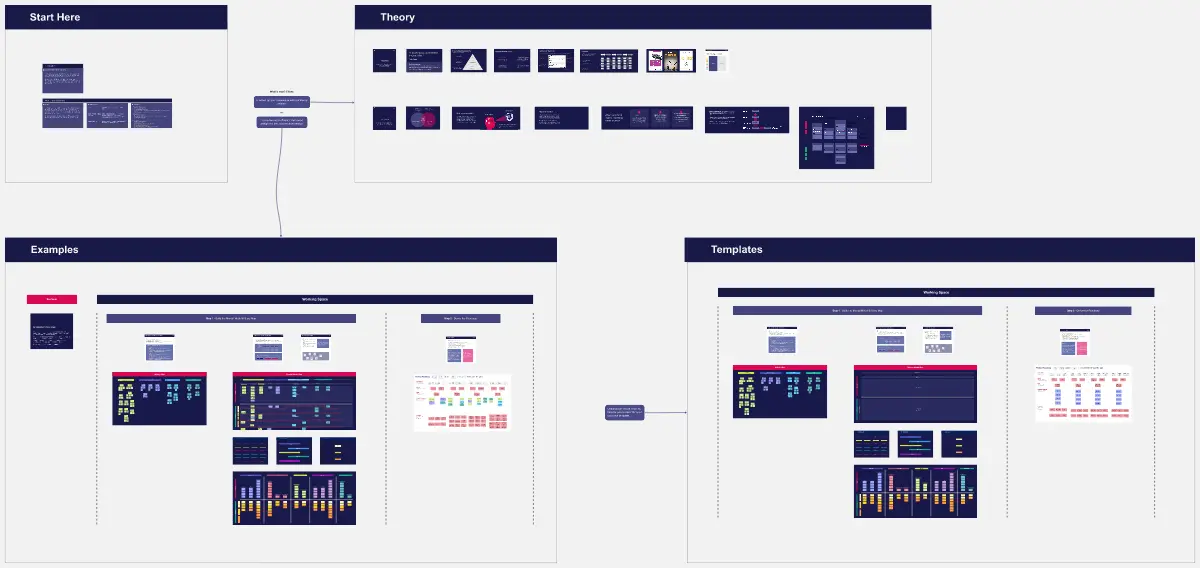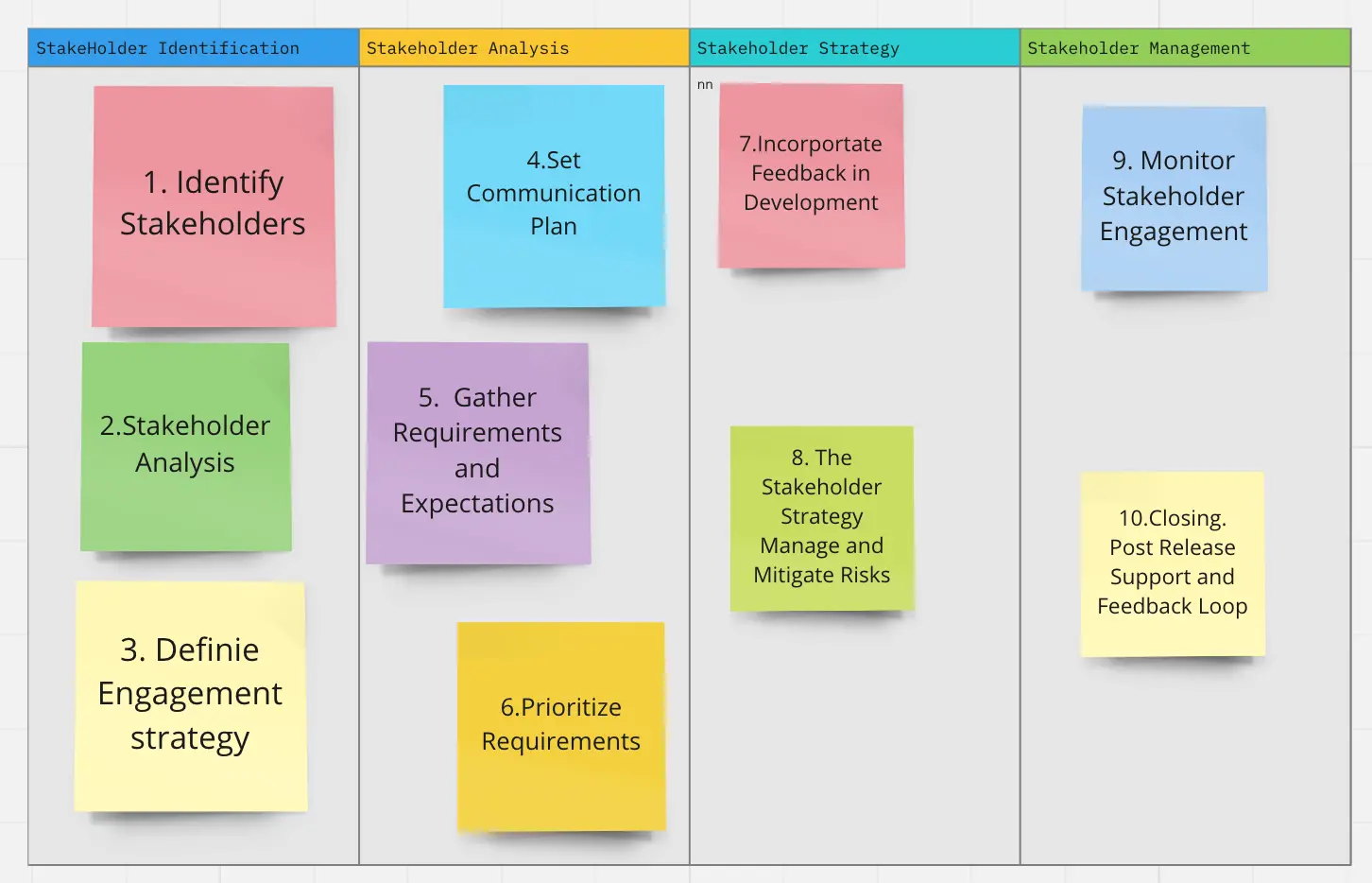1. Initial Review of the Proposal
Understanding the Idea: When a stakeholder presents an idea, the first step is to understand its essence, purpose, and intended value.
Initial Assessment: Perform a quick evaluation to see if the idea aligns with the project's goals and scope.
2. Criteria for Evaluation
Alignment with Project Vision and Goals: Check if the idea aligns with the overall vision and objectives of the project.
Feasibility and Resource Requirements: Assess technical feasibility, resource availability, and the potential impact on the project timeline.
Value to the Customer/User: Determine the potential value or benefit the idea would bring to the end-users.
Risk Assessment: Evaluate any risks or dependencies associated with implementing the idea.
3. Stakeholder Engagement
Discussion with Stakeholders: Organize a meeting with the stakeholder to discuss the idea in detail, addressing any questions or concerns.
Feedback Loop: Ensure there is a feedback loop where stakeholders can be kept informed about the decision-making process.
4. Backlog Refinement Meeting
Inclusion in Refinement Agenda: If the idea passes the initial review, include it in the agenda for the next backlog refinement meeting.
Team Evaluation: Allow the development team to evaluate the idea in terms of implementation complexity and effort estimation.
Prioritization Discussion: Discuss where the item fits in the product backlog priority, considering current commitments and sprint goals.
5. Decision Making
Consensus Building: Aim for a consensus among team members, the Product Owner, and stakeholders.
Acceptance Criteria: Define clear acceptance criteria for the idea to be considered viable.
Final Decision: The Product Owner makes the final decision to accept or reject the idea based on team input and overall project strategy.
6. Communication of Decision
Transparent Communication: Communicate the decision and its rationale to the stakeholder and the team.
Feedback to Stakeholder: Provide constructive feedback to the stakeholder, especially if the idea is rejected, explaining the reasons and possible future considerations.
7. Documentation and Tracking
Recording in Backlog: If accepted, add the item to the product backlog with appropriate details and priority.
Updating Roadmaps and Plans: Reflect any changes in the project roadmap and sprint plans.
8. Review and Adaptation
Continuous Monitoring: Continuously monitor the progress and impact of the implemented idea.
Adaptation Based on Feedback: Be open to revisiting the decision if new information or feedback emerges.
Tools and Resources
Collaboration Tools: Tools like JIRA, Confluence for managing backlog items and facilitating communication.
Decision-Making Frameworks: Utilize frameworks like Cost-Benefit Analysis or SWOT Analysis for thorough evaluation.
Communication Platforms: For discussions with stakeholders and team meetings (e.g., Slack, Microsoft Teams).

Mark V. Smetanin
Product Portfolio Director @ CHM inc.
E-commerce, AdTech, SalesFunnels, ShortTermRentals, Property Management, SAAS, Communication models, API, Payments, Fintech.
Categories
Similar templates
10 Step Stakeholder Management
Product Discovery Ideation Session

Product Discovery Ideation Session
The Product Discovery Ideation Session template fosters creativity and innovation in product development. By providing a structured framework for brainstorming ideas, exploring user needs, and generating solutions, this template fuels ideation sessions. With sections for user persona development, problem validation, and idea prioritization, it guides teams through the product discovery process, ensuring that solutions are aligned with user needs and market opportunities. This template serves as a catalyst for generating and refining innovative product ideas.
Workshop: How to Build a User Centric Roadmap

Workshop: How to Build a User Centric Roadmap
Create user-focused product plans with the Workshop: How to Build a User Centric Roadmap template. This tool helps you prioritize features based on user needs and feedback. Use it to align your team around user-centric goals, ensuring your product development efforts are driven by real user insights. Ideal for product managers and teams looking to enhance their product's user experience and ensure it meets customer expectations effectively.
10 Step Stakeholder Management
Product Discovery Ideation Session

Product Discovery Ideation Session
The Product Discovery Ideation Session template fosters creativity and innovation in product development. By providing a structured framework for brainstorming ideas, exploring user needs, and generating solutions, this template fuels ideation sessions. With sections for user persona development, problem validation, and idea prioritization, it guides teams through the product discovery process, ensuring that solutions are aligned with user needs and market opportunities. This template serves as a catalyst for generating and refining innovative product ideas.
Workshop: How to Build a User Centric Roadmap

Workshop: How to Build a User Centric Roadmap
Create user-focused product plans with the Workshop: How to Build a User Centric Roadmap template. This tool helps you prioritize features based on user needs and feedback. Use it to align your team around user-centric goals, ensuring your product development efforts are driven by real user insights. Ideal for product managers and teams looking to enhance their product's user experience and ensure it meets customer expectations effectively.
